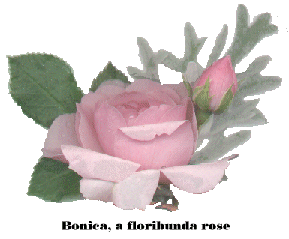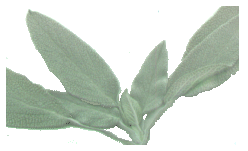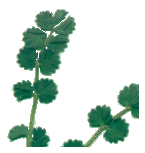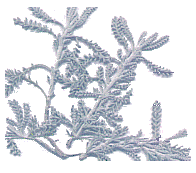
ROSES When rose blooms are fading, cut back to the first 5-leaflet leaf and cut any dead or damaged canes back to the ground level. I don't use the roses for rose hips, only for potpourri so I do occasionally use some commercial fertilizer on them. To be honest, I don't have very good luck with roses as I don't take the time to spray them at the right time for black spot and they end up after that first spring and early summer fabulously georgous blooming period with black spot, loosing most of their leaves and spending the rest of the summer with below ideal bloom. Some years when it is cooler and the numidity is lower, they do pretty well. They should be fertilized with , say 5-10-10, once a month throughout the growing season and fungaside applied regularly.. follow the directions on the product. An old friend in California always used soapy water for the fungus and it worked for him, but he was much more organized than I. Roses should be trimmed while still dormant in the late winter or early spring. In Texas that's in mid February, usually. Too early and more freeze damage could occur..Much later and you are cutting off active stems. ![[ruler]](pic/rbbar.gif)
RUSHES especially (Juncus effusus) Makes good torches. Gather, hang to dry, strip off the outer leaves, soak stems in oil, place in a holder or container of sand and light. They will burn for about an hour, according to length. The small cattail, (Typha latifolia),has a blossom about a quarter of an inch thick and about five inches long. They have only a slight woody scent, so, to enhance them, try soaking the tail end in cologne or essential oils over nite. Place in a tall container of sand and light, They will stop burning when the tail has burned out. ![[ruler]](pic/rbbar.gif)
SAGE (Salvia officinalis) 
Scan of Salvia officinalis
Another good strewing herb. In Victorian times, a presentation of sage denoted esteem . It is one of my favorite culinary herbs. It is unsurpassed, IMHO, for chicken dressing and seasoning. It makes a very good tea. It seems that the oriental folks liked it so well they would trade some of their teas for it. When the pioneers were boycotting England for taxes on the teas, they used sage as a local tea and came to really enjoy it. It is soothing to the stomach and relaxing. AND IT SMELLS SO GOOD! Sage can also be used as an astringent for facials, as a bath water or for disinfecting bath and kitchen facilities. Besides being astringent, it adds its fragrance. Try putting a few pinches in your chicken soup, and if you make your own sausage, you have to have sage! It is quite effective with pork chops. I can't eat pork but for those who can and do, it can help to counteract some of the fat. Be sure you trim as much fat off as possible, though! I enjoy sage tea. Like anything else, though, enough is enough and if you put too much in, it can be bitter. ![[ruler]](pic/rbbar.gif)
SALAD BURNET  Scan of salad burnet You can enjoy a bit of salad burnet nearly all year. Be sure to keep the blooms trimmed. If it bolts, as it is likely to do in hot weather, and allowed to finish its blooming season, it won't put out as many new fresh leaves. It is pretty hardy and sometimes, in a mild winter, will produce a big part of the winter. Scan of salad burnet You can enjoy a bit of salad burnet nearly all year. Be sure to keep the blooms trimmed. If it bolts, as it is likely to do in hot weather, and allowed to finish its blooming season, it won't put out as many new fresh leaves. It is pretty hardy and sometimes, in a mild winter, will produce a big part of the winter. Some of my friends think that the tiny little leaves are too insignificant to make a difference in a salad. It has a lot of vitamin C, and I think that it adds just the right touch. I use it instead of parsley or with parsley. Sprinkle some in your cream sauces, make a butter sauce with it and some rosemary, add a bit to scampi sauce along with the parsley to aid digestion. A strong tea of the whole plant can be helpful to relieve diarrhea. Relieves sunburn and skin eruptions. ![[ruler]](pic/rbbar.gif)
SANTOLINA (Lavender Cotton)  This is a 'scan' of actual leaves. The color is fairly accurate as the plant is a soft grey with a green tint, looks kind of silvery
This is a 'scan' of actual leaves. The color is fairly accurate as the plant is a soft grey with a green tint, looks kind of silvery
|


 Scan of salad burnet
Scan of salad burnet 


 Scan of salad burnet
Scan of salad burnet 